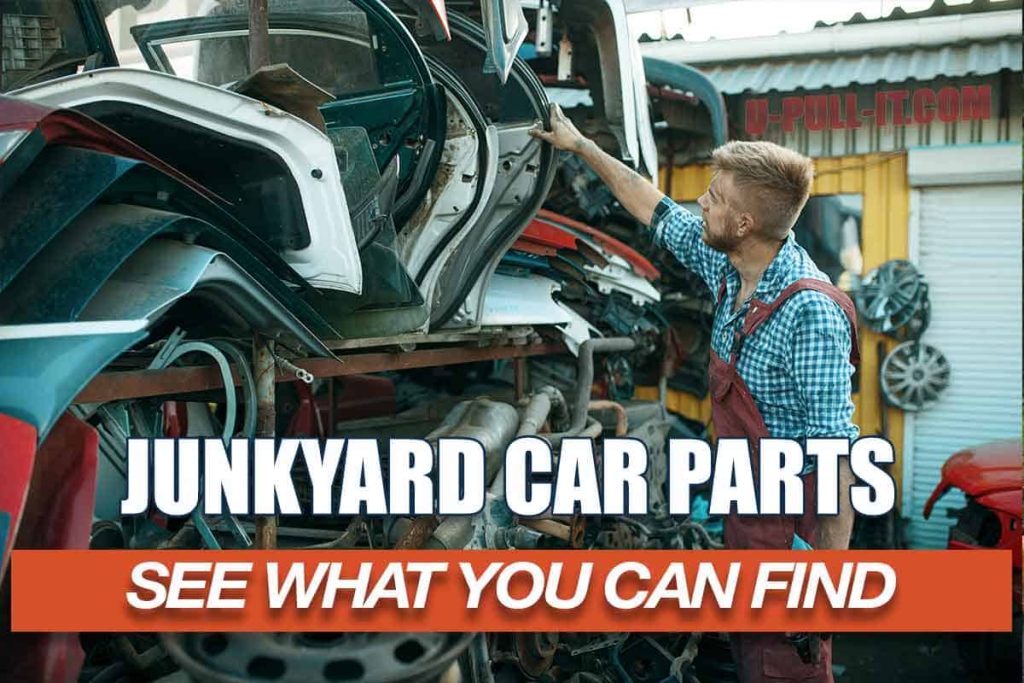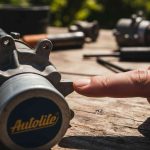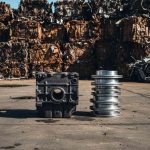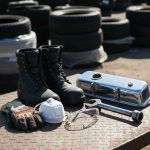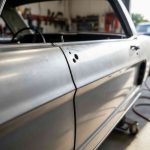As a frequent visitor to junkyards, I’ve come across a wide variety of auto parts that can be found in these treasure troves. In this comprehensive guide, I’ll share my knowledge and experience to help you navigate your way through a junkyard and find the parts you need.
A Comprehensive Guide to Auto Parts You Can Find at a Junkyard
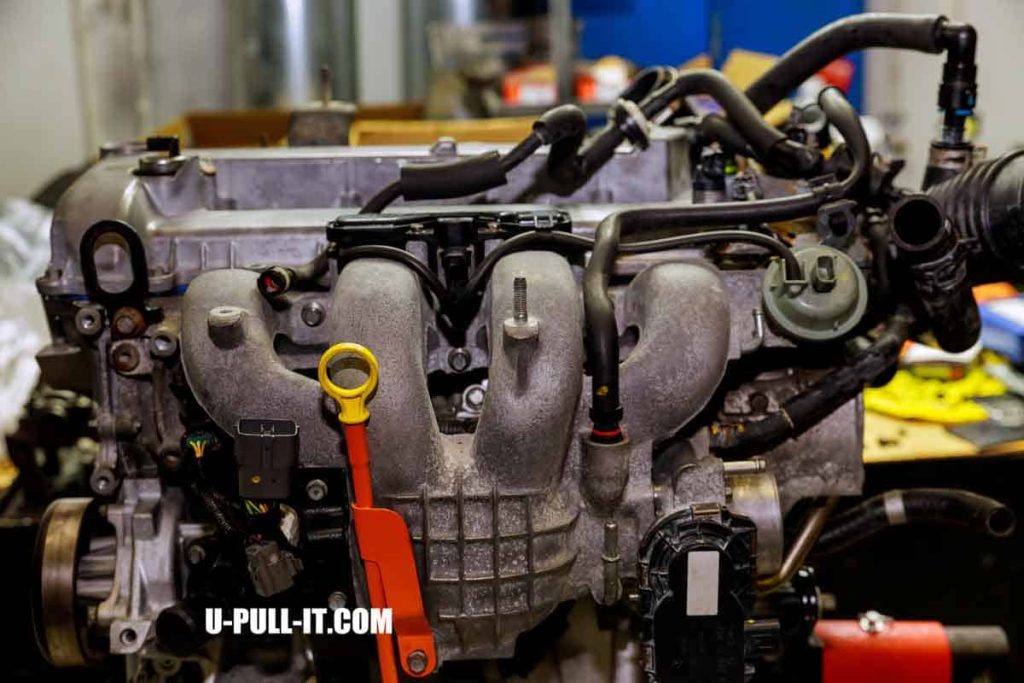
Engines and Transmissions
One of the most valuable parts you can find at a junkyard is the engine. Whether you’re looking for a specific model or just want to explore your options, junkyards often have a wide variety of engines available. Similarly, transmissions are also a common find. These are essential components of any vehicle, and finding a good one at a junkyard can save you a lot of money compared to buying new.
Body Parts
From doors and hoods to bumpers and fenders, you can find a wide variety of body parts for different types of vehicles at a junkyard. Whether you’re looking for a specific part for a classic car or just need to replace a damaged part on your daily driver, the junkyard is a great place to start your search.
Interior Parts
Junkyards are also a great place to find interior parts. From seats and dashboards to steering wheels and center consoles, you can find just about any interior part you need. These parts can be especially useful if you’re restoring a classic car and need specific parts that are no longer manufactured.
Tires and Wheels
Tires and wheels are another common find at junkyards. Whether you need a spare tire, want to replace a damaged wheel, or are looking for a specific type of wheel for your vehicle, the junkyard is a great place to look.
Electrical Components
From alternators and starters to batteries and spark plugs, you can find a wide variety of electrical components at a junkyard. These parts can be especially useful if you’re having electrical issues with your vehicle and need to replace a specific component.
Miscellaneous Parts
In addition to the parts mentioned above, you can find a wide variety of other parts at a junkyard. From radiators and exhaust systems to brake parts and suspension components, the possibilities are endless.
Tools and Equipment
While not technically auto parts, you can often find various tools and equipment at a junkyard. These can be useful if you need a specific tool to work on your vehicle or if you’re looking to add to your collection.
How to Find Parts at a Junkyard
Finding the parts you need at a junkyard can be a bit of a treasure hunt. Here are some tips to help you find what you’re looking for:
- Know What You Need: Before you head to the junkyard, make a list of the parts you need. This will help you stay focused and ensure you don’t forget anything.
- Bring the Right Tools: Make sure you bring the necessary tools to remove the parts you need. This might include wrenches, screwdrivers, pliers, and other basic tools.
- Check the Inventory: Many junkyards have an online inventory that you can check before you visit. This can save you time and help you plan your trip.
- Ask for Help: If you’re having trouble finding a specific part, don’t hesitate to ask the staff for help. They know the yard well and can often point you in the right direction.
- Inspect the Parts: Before you buy a part, make sure to inspect it carefully for any damage or wear. This can help you avoid buying a part that won’t work or will need to be replaced soon.
The Benefits of Buying Parts from a Junkyard
There are several benefits to buying parts from a junkyard. First and foremost, you can save a lot of money. New auto parts can be expensive, and buying used parts from a junkyard is often much cheaper. Plus, you can often find parts that are no longer manufactured or are hard to find.
Another benefitis the environmental aspect. By purchasing used parts, you’re helping to recycle and reduce waste, which is beneficial for the environment.
Understanding Parts Warranty at the Junkyard
When you’re on the hunt for auto parts at a junkyard, one of the key considerations is the warranty on the parts. This is a guarantee provided by the junkyard that the part you’re purchasing is in working condition and will perform as expected for a certain period.

The Cost of Warranty
The cost of the warranty can vary depending on the junkyard and the specific part you’re purchasing. Some junkyards may offer a warranty as part of the purchase price, while others may charge an additional fee. It’s always a good idea to ask about the warranty cost upfront so you can factor it into your budget.
Duration of the Warranty
The duration of the warranty can also vary. Some junkyards may offer a 30-day warranty, while others may offer a longer period such as 90 days or even up to a year. The duration of the warranty is often reflective of the confidence the junkyard has in the quality of their parts.
What Does the Warranty Cover?
Typically, a warranty will cover any defects in the part that were not apparent at the time of purchase. This means that if the part fails to function as expected within the warranty period, the junkyard will replace it free of charge or refund your money. However, it’s important to note that warranties usually do not cover issues that arise from improper installation or misuse of the part.
The Best Option for You
When considering a warranty, it’s important to weigh the cost against the potential benefit. If the part is relatively inexpensive and easy to replace, it might not be worth paying extra for a warranty. However, for more expensive parts or those that are difficult to install, a warranty can provide peace of mind and potentially save you money in the long run.
A warranty can be a valuable addition to your junkyard part purchase. It’s always a good idea to ask about the warranty options available to you and to read the fine print to understand exactly what is covered. Remember, at U-Pull-It, we’re always here to help guide you through the process and ensure you find the parts you need.
Safety Measures
While junkyards can be a treasure trove of valuable parts, it’s important to keep safety in mind. Always wear protective clothing, including gloves and sturdy shoes, to protect yourself from sharp objects. It’s also a good idea to bring a friend along, not only for the company but also for safety reasons.
The Art of Negotiation
One of the best parts about shopping at a junkyard is the opportunity to negotiate. Prices aren’t always set in stone, and if you’re buying multiple parts, you may be able to get a discount. Don’t be afraid to haggle a little – it’s all part of the junkyard shopping experience!
The Joy of Discovery
Perhaps one of the most enjoyable aspects of visiting a junkyard is the thrill of discovery. You never know what you might find, and there’s a certain satisfaction in finding the perfect part for your vehicle. It’s like a treasure hunt, and the prize is a functional part at a fraction of the cost of a new one.
Whether you’re restoring a classic C class Mercedes or keeping your reliable GMC van running smoothly, a junkyard can be a treasure trove of auto parts. From back doors to door handles, trim panels to wiring harnesses, and even auto glass, you’ll be amazed at the parts we have that can fit a wide range of vehicles. The beauty of a junkyard is the diversity of parts available. It’s like a supermarket for auto parts, where you can walk the aisles and pick out exactly what you need.
If you’re working on a Dodge van, for example, you might be looking for a specific trim panel or wiring harness. Rather than ordering a new part and waiting for it to arrive, you can head to the junkyard and find the auto parts to complete your project on the same day. We have parts from a wide range of makes and models, so you’re likely to find exactly what you need.
For those of you with a Series Volvo, you’re in luck. These cars are known for their durability and longevity, which means there are plenty of them in junkyards. This increases your chances of finding the part you need. And remember, we can help guide you to the right section of the yard, making your search easier and more efficient. So next time you need a part, consider the junkyard. It’s a cost-effective and environmentally friendly way to keep your car on the road.
